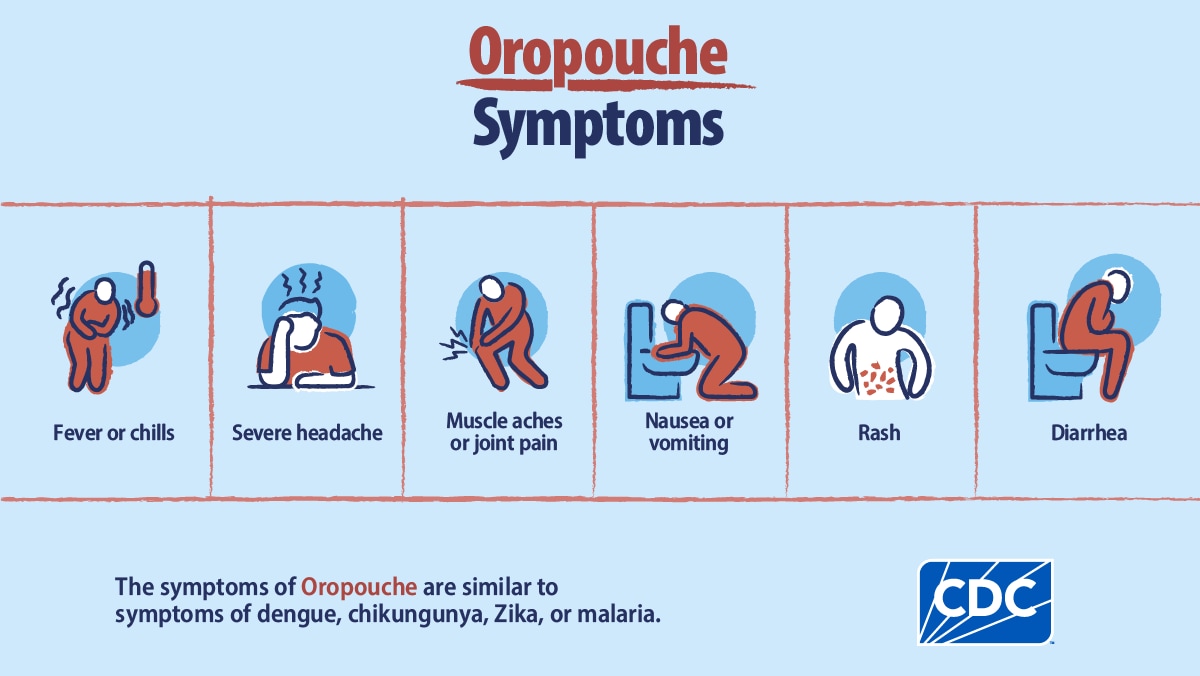Key points
- Common symptoms for Oropouche include fever, severe headache, chills, muscle aches, and joint pains.
- Symptoms typically last 2-7 days, but often reoccur later.
- Some people (fewer than 1 in 20) will develop more serious disease.
- Oropouche virus can be passed from a pregnant woman to their fetus.

Symptoms
Symptoms typically start 1 to 10 days after being bitten by an infected biting midge or mosquito. Common symptoms include sudden onset of fever, severe headache, chills, muscle aches, and joint pain. Other symptoms can include sensitivity to light, dizziness, pain behind the eyes, nausea, vomiting, and rash.
Symptoms typically last less than a week (2–7 days). Most people with Oropouche recover within several days to one month.

Oropouche symptoms can often reoccur a few days or even weeks later. Symptoms are reported to be very similar between the initial illness and reoccurrence.
Some people (fewer than 1 in 20) will develop more serious disease. This includes meningitis (inflammation of the membranes that surround the brain and spinal cord), encephalitis (inflammation of the brain), or bleeding.
Rarely, Oropouche may cause Guillain-Barré syndrome (GBS). GBS is a sickness in which a person’s own immune system damages their nerve cells, causing muscle weakness and sometimes, paralysis. These symptoms can last a few weeks or several months. Most people fully recover from GBS, though some people have permanent damage.
Death from Oropouche is rare.
Pregnancy and Oropouche
Based on limited information from Brazil, Oropouche virus may spread from a pregnant woman to their fetus. This spread has been associated with the baby being stillborn or having birth defects.
When to talk to your doctor
Talk to a healthcare provider if you have symptoms like those caused by Oropouche and recently traveled to an area where Oropouche occurs or an area with an Oropouche outbreak. Tell them about your travel history. Your healthcare provider can order laboratory tests to diagnose Oropouche.
